Physical Address
304 North Cardinal St.
Dorchester Center, MA 02124
Intestinal malrotation refers to abnormal rotation and/or fixation of the midgut. As the intestine re-enters the abdominal cavity during the 8th to 10th gestational week, it undergoes a 270-degree counterclockwise rotation that causes the duodenum to be fixed to the retroperitoneum, thereby creating the ligament of Treitz. When the intestine does not re-enter or become fixed, various degrees of malrotational anatomy occur, which predisposes the intestine to twist on the resultant narrow mesentery or become obstructed through the presence of congenital (Ladd) bands. The laparoscopic approach for malrotation without volvulus has been well reported, and laparoscopic treatment with volvulus is gaining popularity as well.
Bilious emesis is an indication for an emergent upper gastrointestinal (UGI) contrast study to evaluate for malrotation with or without volvulus. When volvulus is identified, emergent operative intervention is indicated. In experienced hands, laparoscopy can be utilized in this situation. However, when the anatomy or bowel viability is unclear, conversion to an open approach is reasonable.
Laparoscopy is an ideal approach when the UGI study is equivocal or shows a low-lying ligament of Treitz ( Fig. 7-1 ). The intestinal anatomy can be assessed ( Fig. 7-2 ), and the surgeon can proceed with a laparoscopic Ladd procedure if indicated.
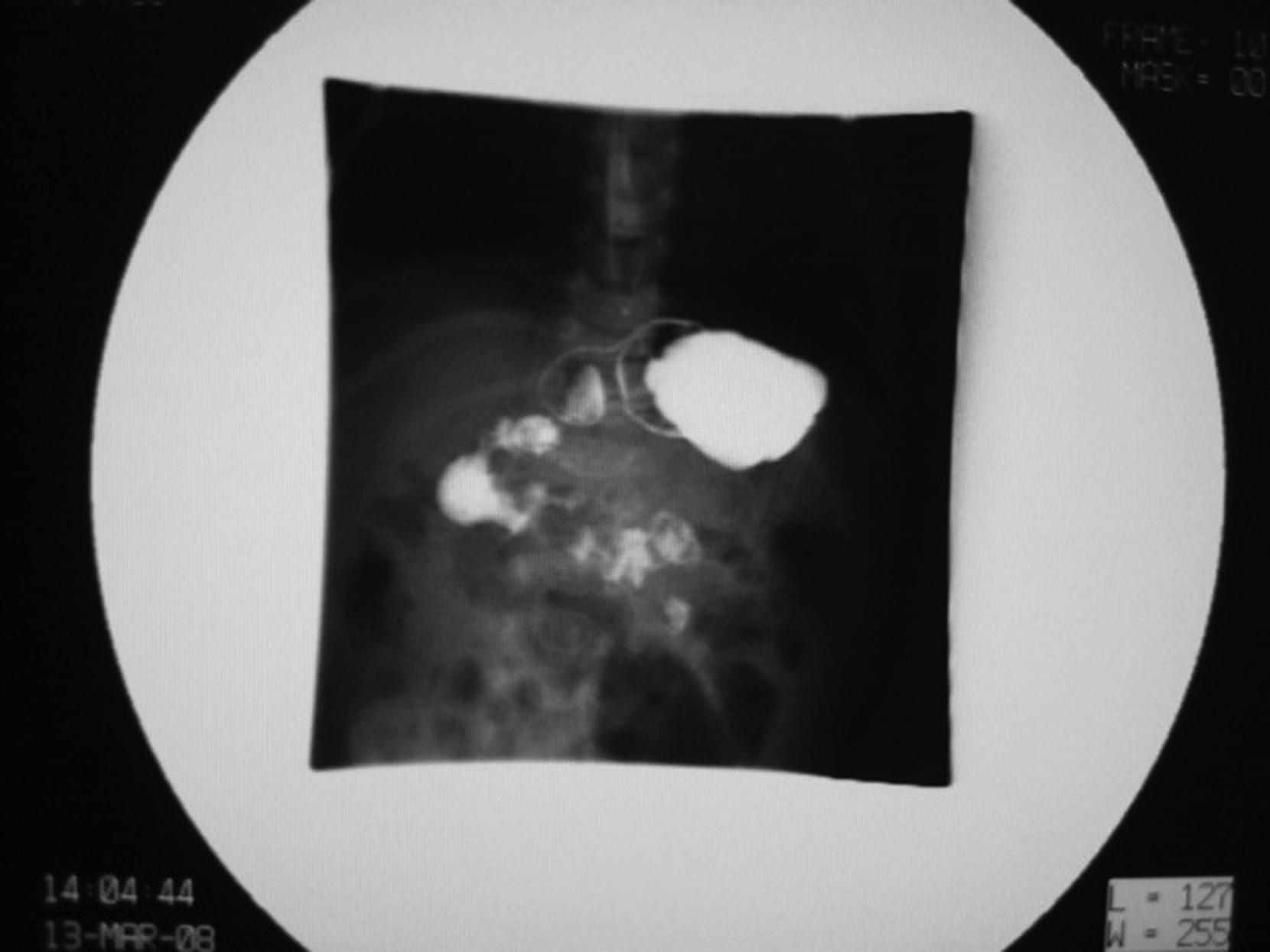
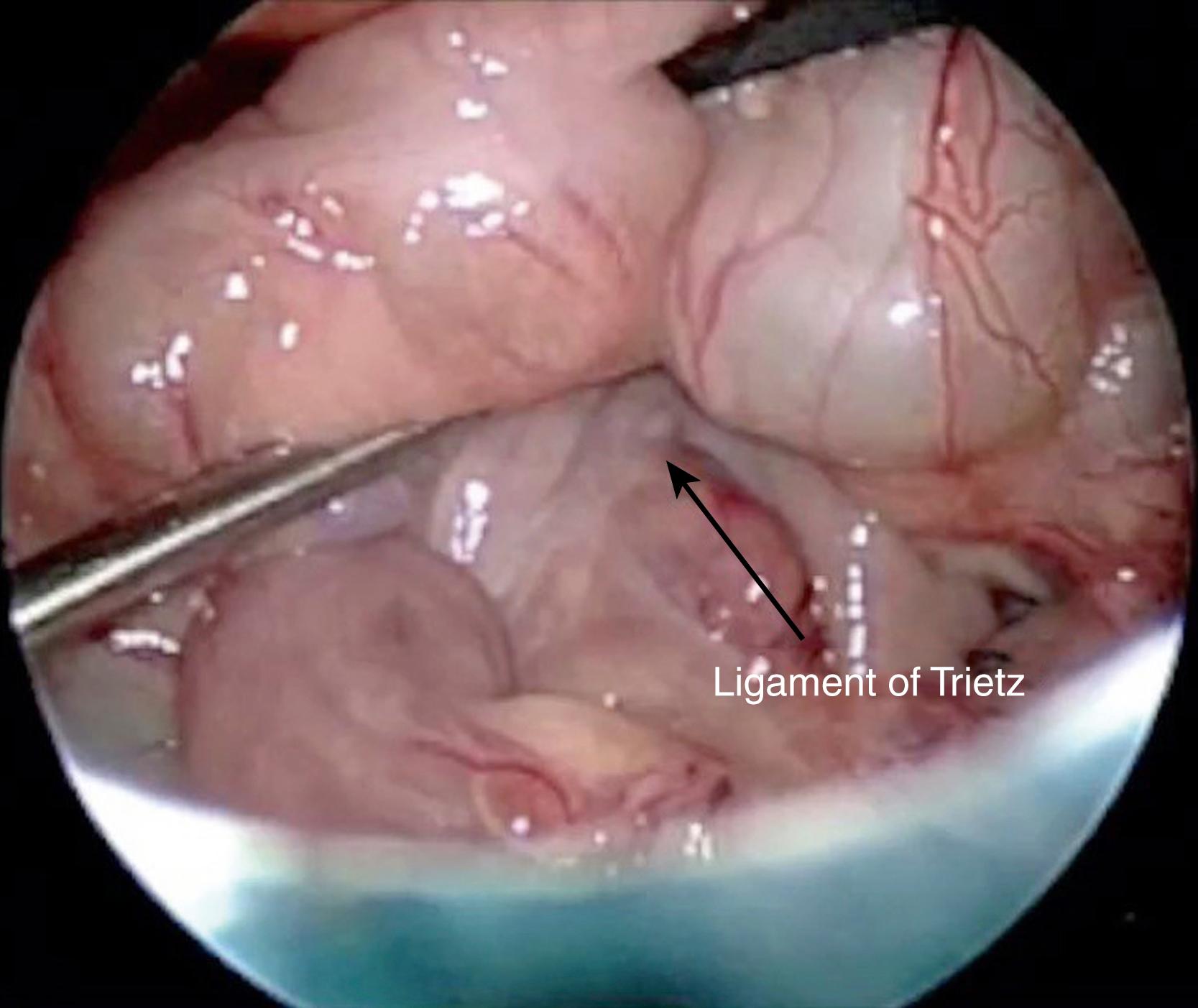
While a UGI contrast study is the most common diagnostic modality, ultrasound is becoming more commonly used. When malrotation with volvulus is present, the superior mesenteric artery and vein are seen to be inverted on ultrasound. Cross-sectional imaging (computed tomography and magnetic resonance imaging) is also used ( Fig. 7-3 ) but less commonly in the pediatric population.
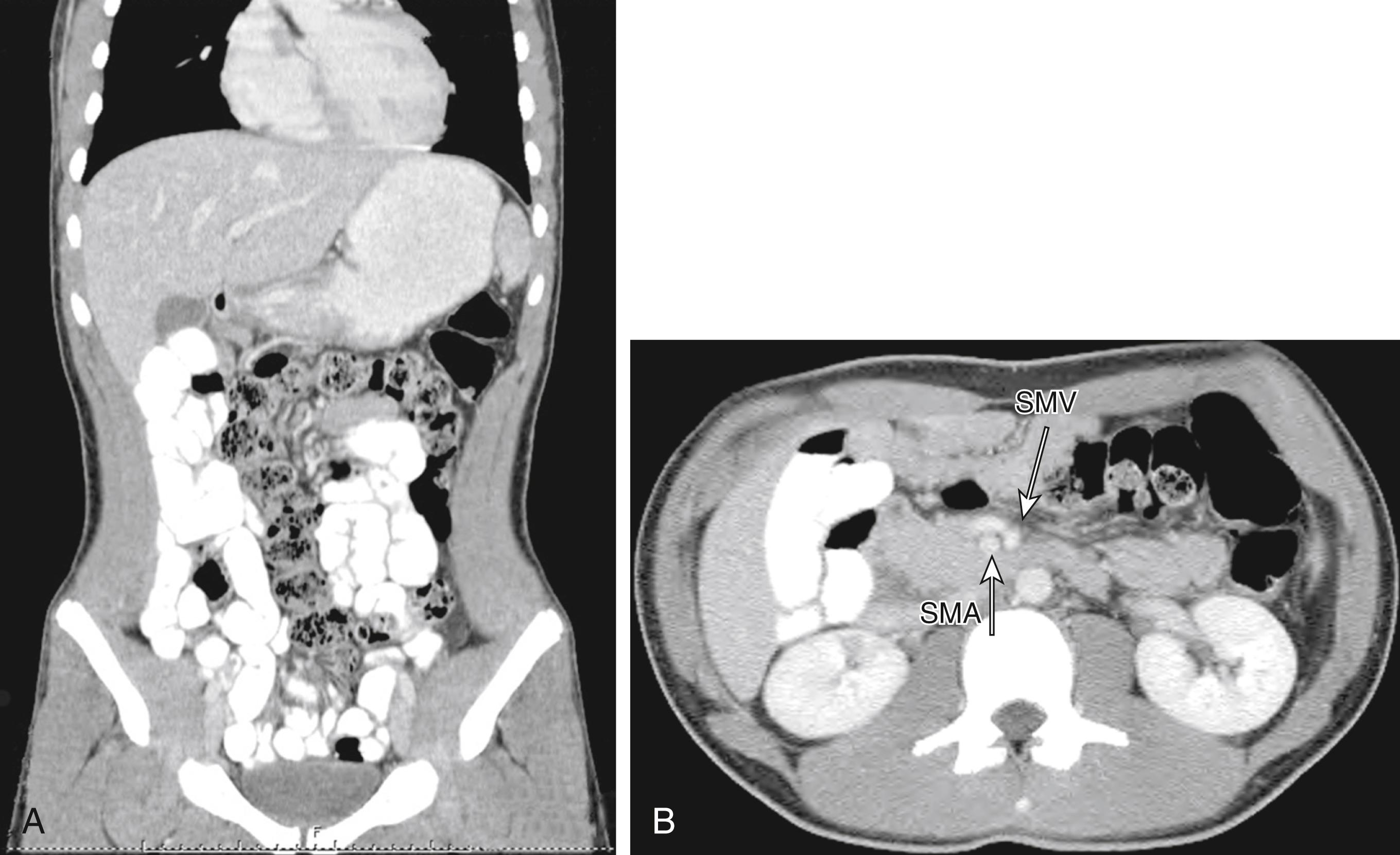
General anesthesia is induced and adequate intravenous access is established. The child is positioned in the supine position on the operating table. When the patient is positioned in the normal supine position, the surgeon will usually stand on the patient’s right and the assistant on the patient’s left ( Fig. 7-4 ). For a neonate, some surgeons prefer to turn the baby sideways on the table as is usually done for a laparoscopic pyloromyotomy. The infant can also be positioned at the foot of the bed ( Fig. 7-5A ). When this positioning is used, the surgeon and assistant stand at the foot of the patient with the monitor over the patient’s head.
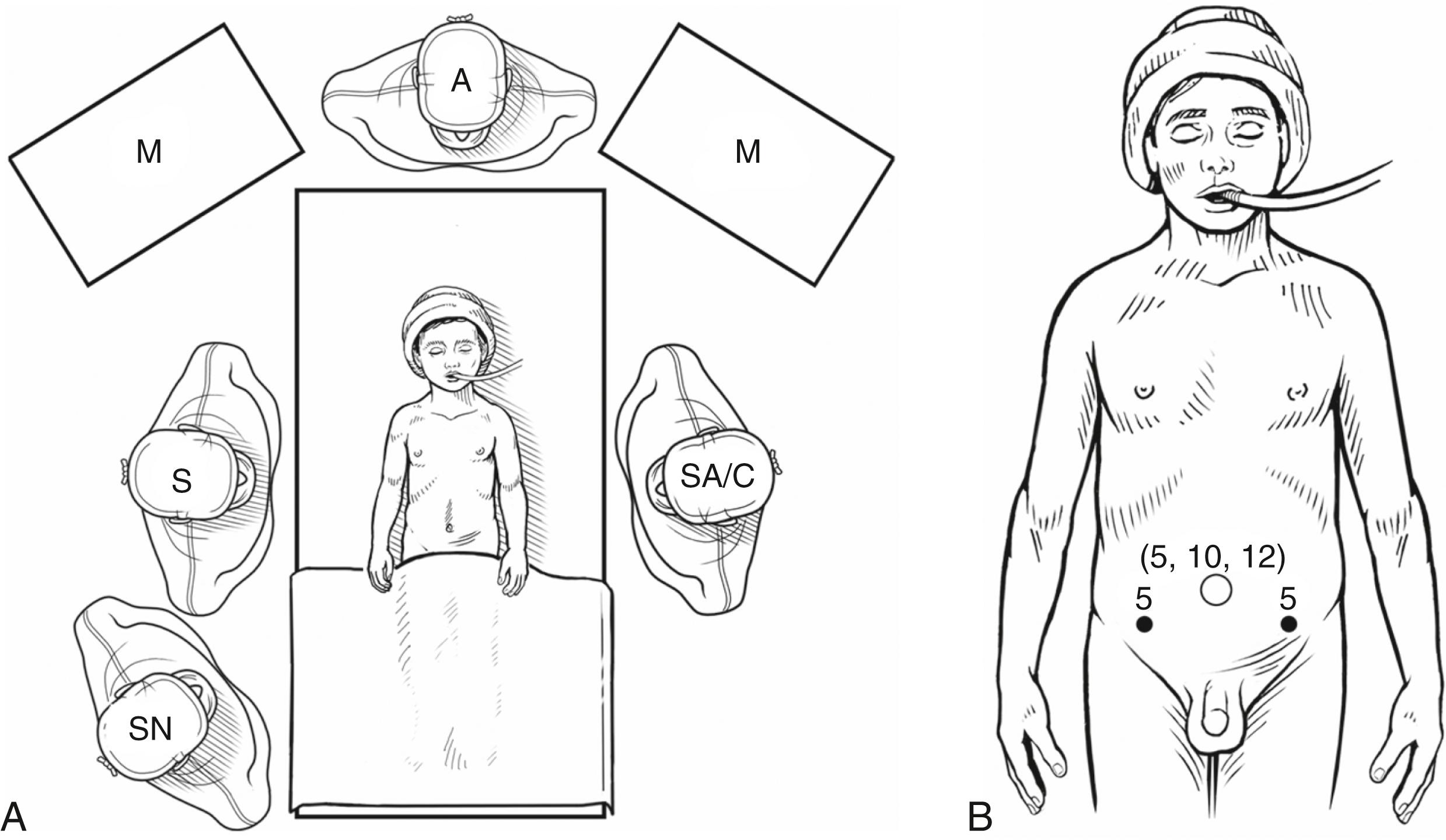
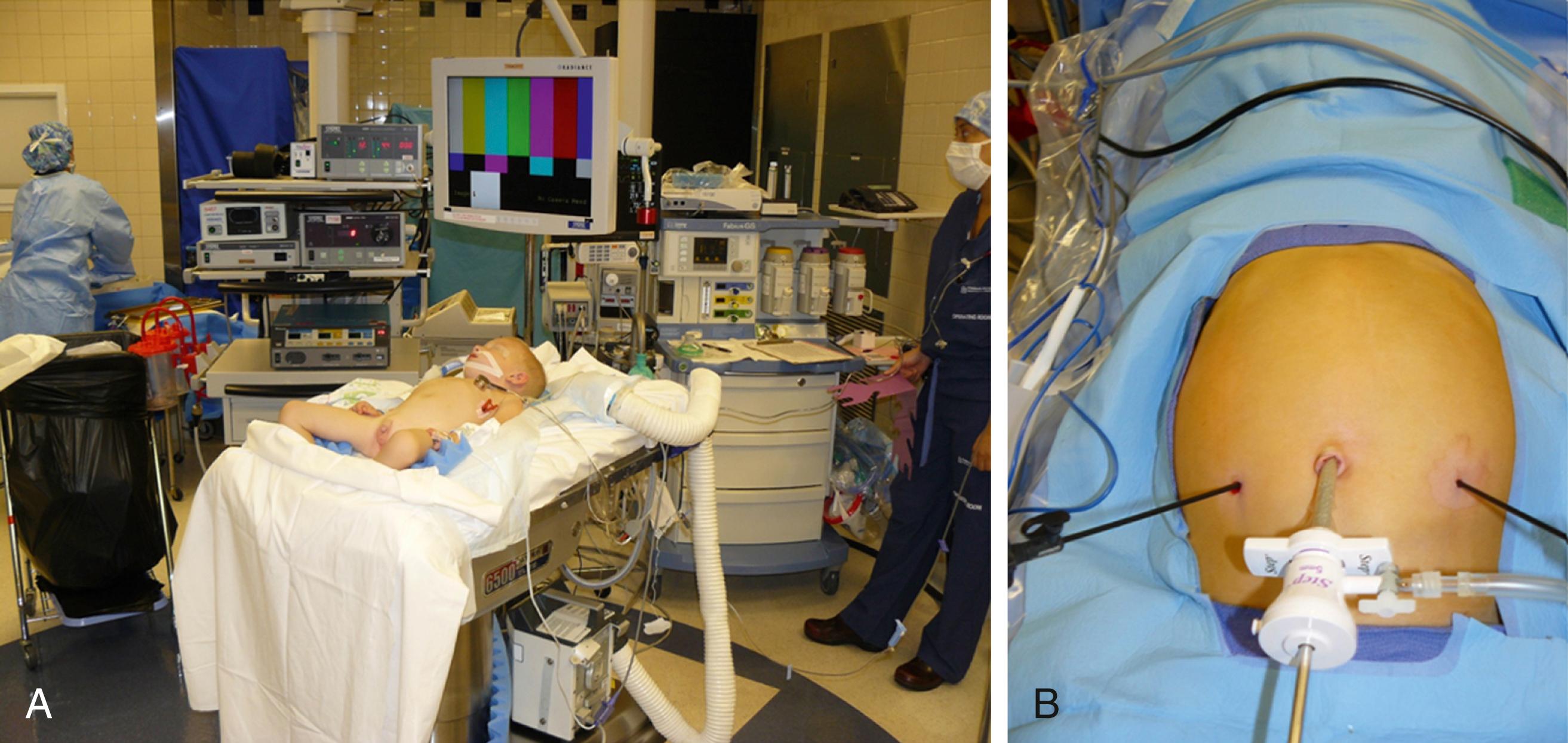
Umbilical access is obtained and a 5-mm port is inserted. Care is taken to avoid injury to the umbilical vessels in neonates (see Chapter 1 for additional information). The pneumoperitoneum is then gently established and two working instruments are introduced. In neonates and smaller children, these instruments can be inserted through small stab incisions ( Fig. 7-5B ). In larger children or adolescents, a 5-mm stab incision or port may be needed. Port/instrument positioning is surgeon dependent. The port/instruments can be situated in the right midabdominal or lower quadrants to triangulate with the umbilical camera port (with an additional instrument in the left midabdomen for the surgical assistant) (see Fig. 7-5 ). The patient is then rotated into a mild reverse Trendelenburg position and to the patient’s left ( Fig. 7-6 ).
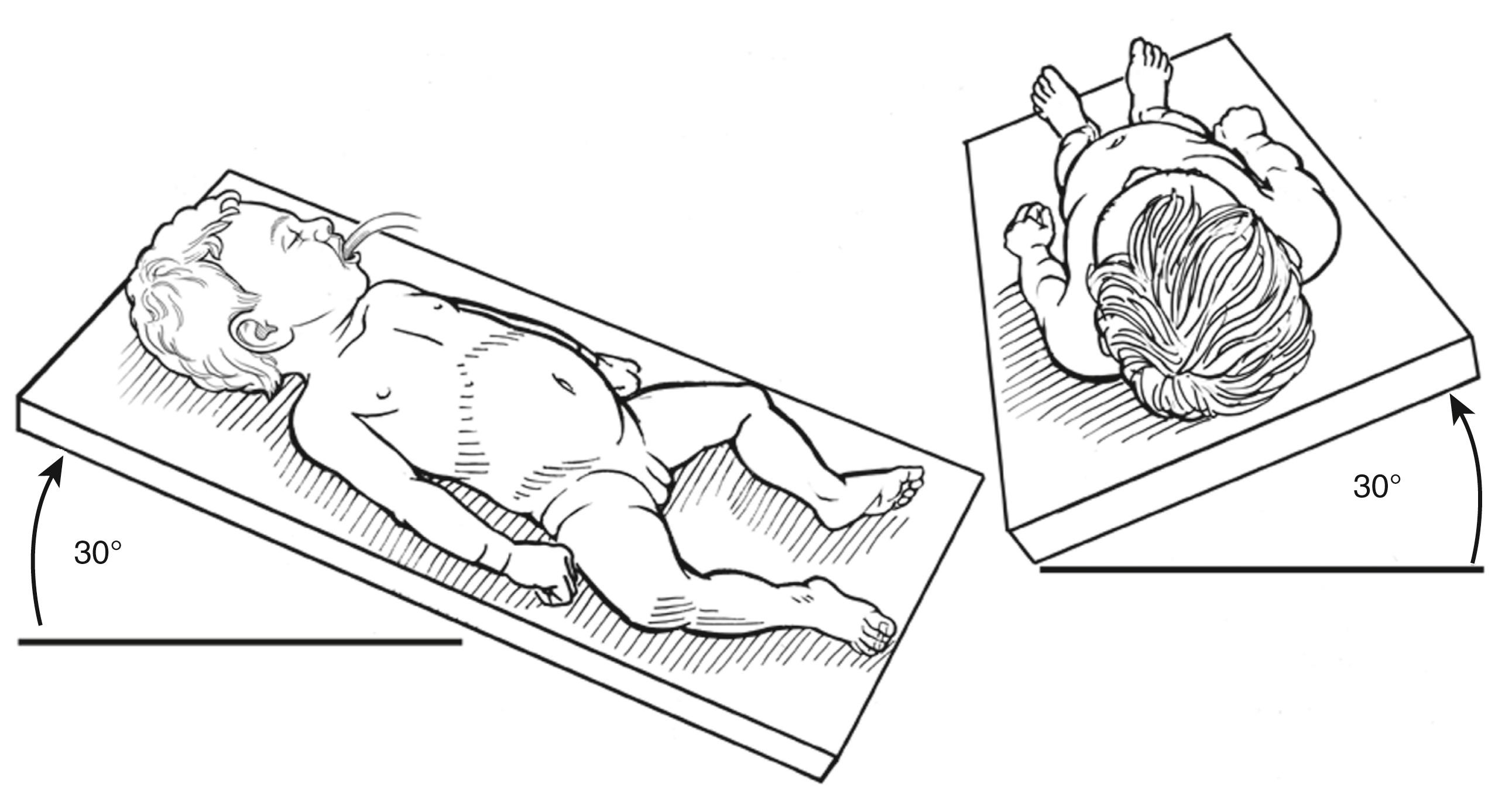
The abdomen is first explored, examining for bowel viability. In neonates, a transabdominal suture can then be placed around the falciform ligament to elevate the liver. Once bowel viability is confirmed, the proximal bowel is examined for the presence of a ligament of Treitz, which will help determine if malrotation is present. Normal rotation is present when the cecum is in the right lower quadrant and there is a definite ligament of Treitz (see Fig. 7-2 ).
The next step is division of the Ladd bands—congenital bands that cross over the duodenum to the cecum and can act as a point of obstruction ( Fig. 7-7 ). In neonates, these can be divided bluntly or carefully with electrocautery. In older children, the bands can be well formed and may require cautery or an ultrasonic scalpel for division ( Fig. 7-8 ). The duodenum should be dissected enough to straighten it out, relieving any kinking and obstruction. Dividing the bands from the duodenum to the right lateral peritoneum and cecum allows the cecum and the right colon to be manipulated to the patient’s left with the small bowel remaining on the right. Attention is then turned to widening the mesentery. By dividing the congenital bands, some of the mesenteric widening has occurred. However, most of the time, the peritoneum overlying the anterior mesenteric leaflet needs to be scored to allow the mesenteric root to be widened further and increase the distance between the small bowel on the right and the colon on the left.
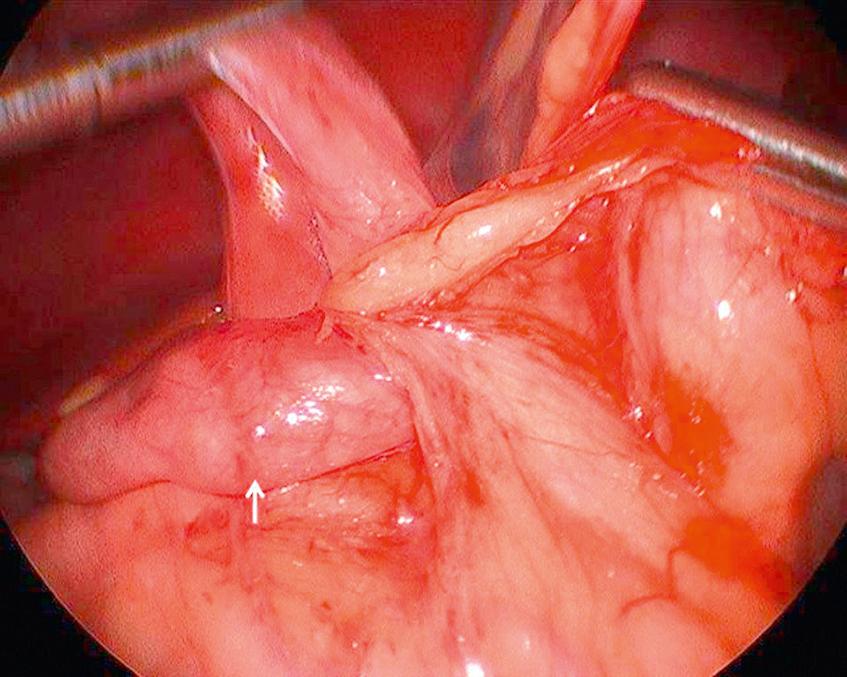
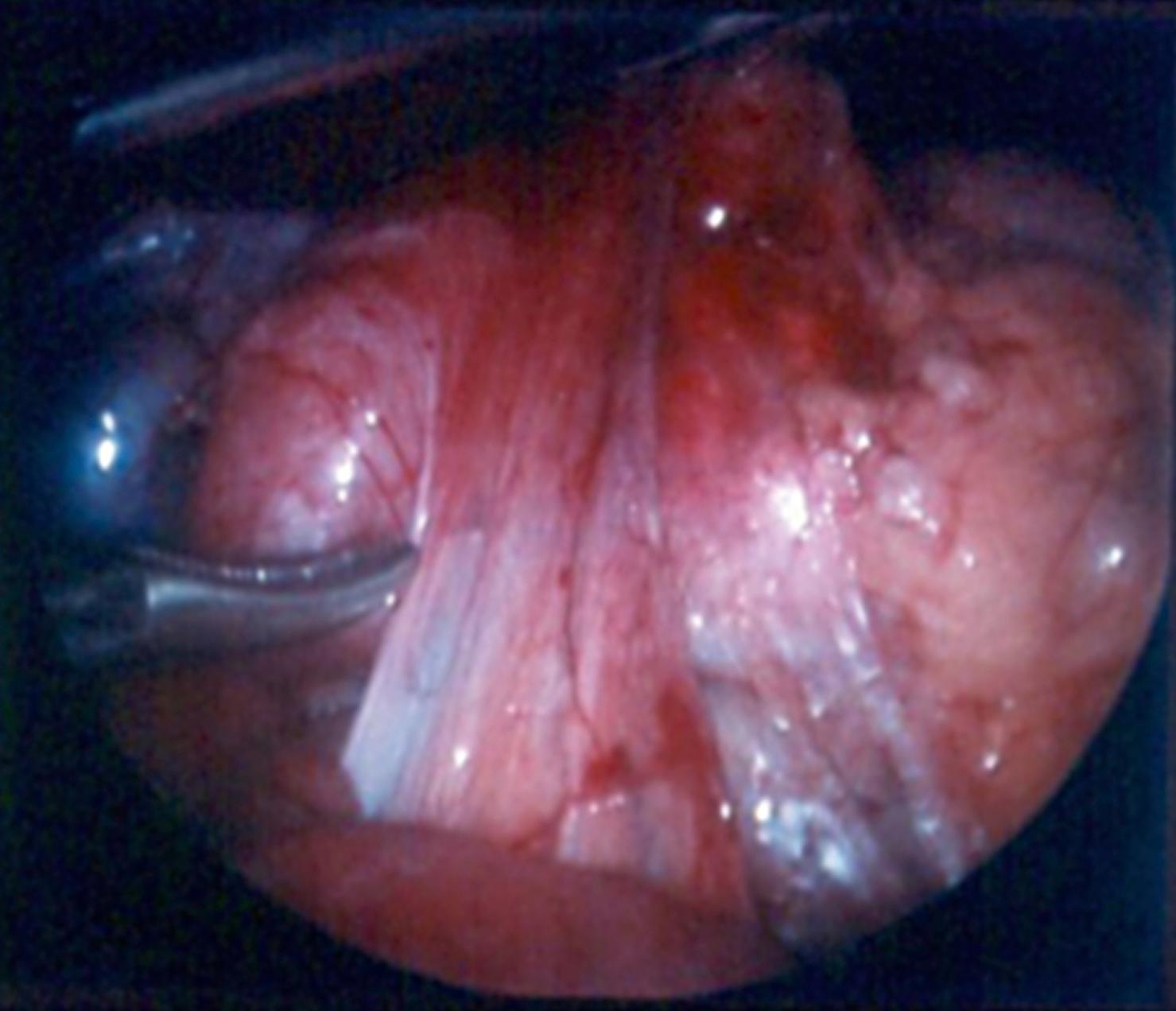
The next step is the appendectomy ( Fig. 7-9 ). The appendix is grasped and exteriorized through the umbilicus. The mesentery can be divided with electrocautery in neonates and small children or via a ligature in older children. The appendix is then removed at its base. The cecum and colon are then returned to the left upper quadrant, and the small bowel to the right abdomen. All ports are removed and the umbilical fascia and skin are closed with absorbable suture. The stab incision sites (or port sites) can be closed either with suture or with skin strips or skin adhesive based on surgeon preference. Local anesthetic is infiltrated into the incision sites to aid in postoperative analgesia.
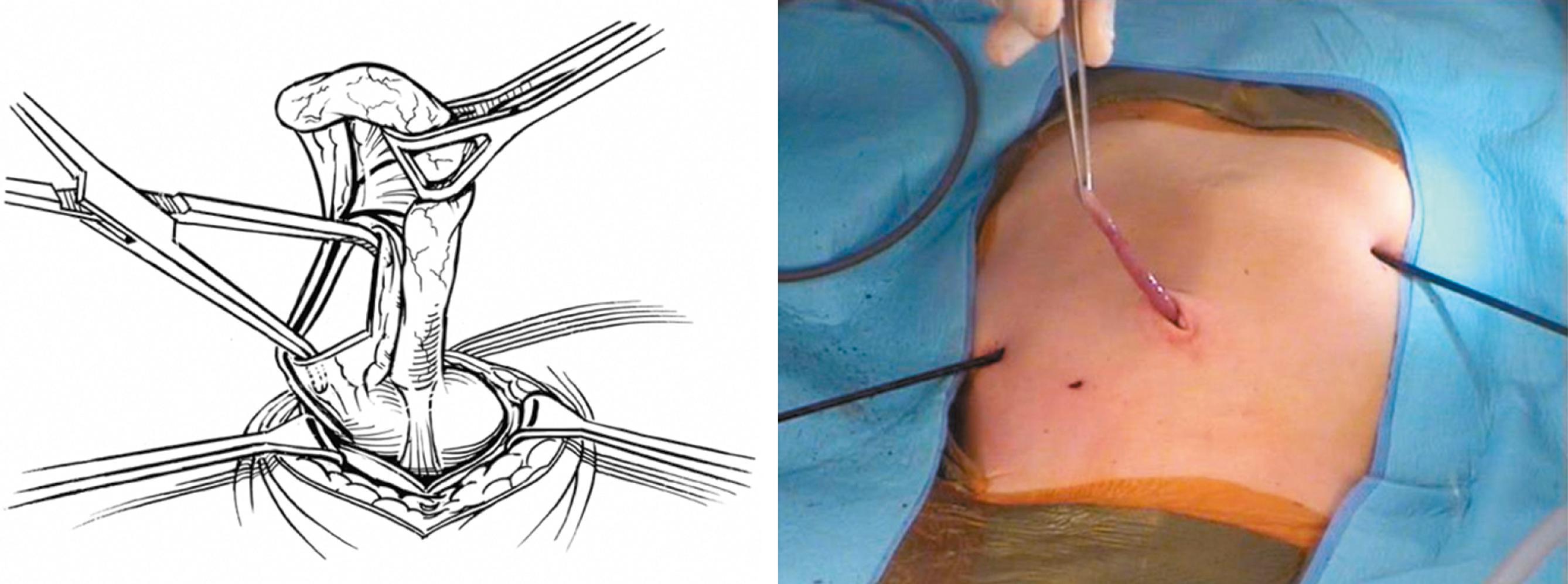
The presence of a volvulus requires special mention ( Fig. 7-10 ). While not an absolute contraindication for proceeding laparoscopically, one must ensure bowel viability. If ischemia or necrosis is present, conversion to an open operation is recommended. However, if not, then proceeding laparoscopically is reasonable, given surgeon comfort and expertise. The volvulus is reduced in a similar manner as done in the open approach, by counterclockwise detorsion. Care at this point must be taken to avoid perforation of the intestine during the detorsion. Therefore using closed graspers and gentle manipulation can be helpful in performing the detorsion. Dividing the Ladd bands prior to attempting detorsion is also helpful. If bowel viability is questionable or if attempts at detorsion are not successful, then conversion to an open operation is recommended, which can be done by vertical extension of the umbilical incision. A traditional large right upper abdominal transverse muscle splitting incision is not necessary.
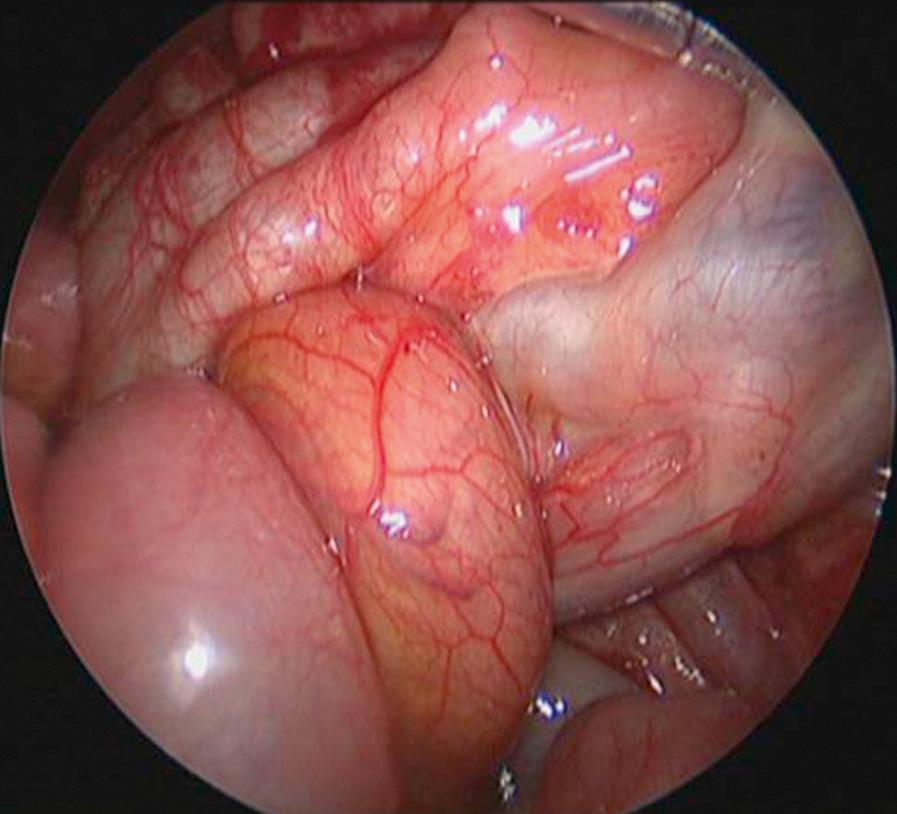
Become a Clinical Tree membership for Full access and enjoy Unlimited articles
If you are a member. Log in here